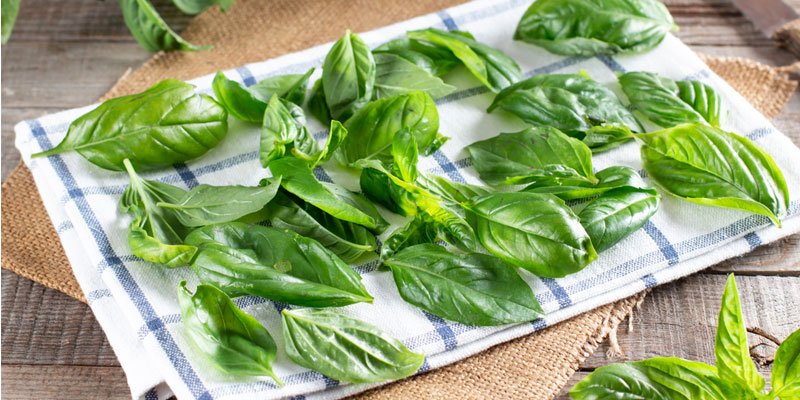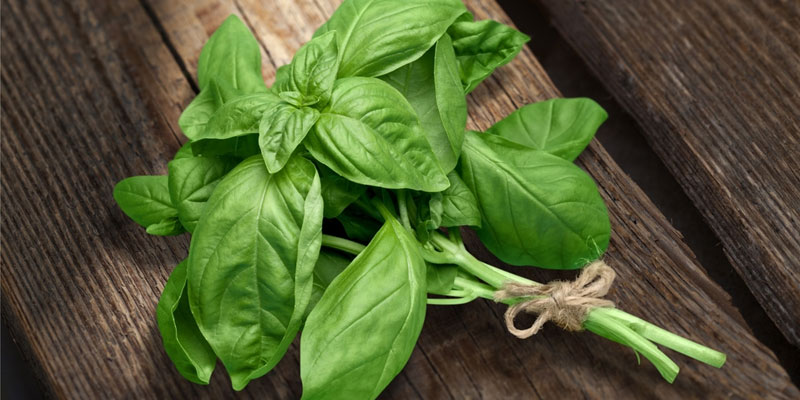Better Websites to own 2025
Jun 11, 2025

Basil is one of the most versatile herbs because of its distinct taste and smell. The strong, sweet, slightly pungent aroma compliments its licorice-like taste and peppery flavor. Interestingly enough, the herb also has a wide range of health benefits that make it a valuable herb to have in your kitchen.
However, it’s not available all year round unless you have a greenhouse. Here’s how to freeze-dry basil so you’ll have a constant supply ready to use anytime you need it.
There are several reasons why you should have freeze-dried basil in your pantry.
Freeze drying has been known to make food shelf stable for more than 25 years. When you freeze-dry the herb, you remove 98% or 99% of the water. It may be a small difference compared to the 90%-95% of water removed from dehydration. But that small amount goes a long way in terms of storage life.
One of the best things about freeze-drying is that it allows maximal nutrient retention. This is because the process doesn’t involve high heat that could destroy vitamins and nutrients.
All you have to do is open a bottle of freeze-dried basil whenever you need it. No more repeated sorting of leaves and removing stems. Your freeze-dried herb is ready to use when you’re ready to cook.
No one can tell the difference between whether you used fresh basil leaves or freeze-dried ones. You don’t get that hint of cardboard smell or flavor like you would with dehydrated herbs. What’s more, the taste and aroma stay the same for years in proper storage.

The first thing you need to do is to remove any packaging, debris, or wilted leaves from your bunch of basil. Next, check the underside of the leaves, as some little critters might be hiding beneath.
Wash the herb under running water, regardless of where you got it. Washing helps remove dirt and bacteria that can ruin your supply and cause illness. For example, a study conducted in 2014 showed that among the herbs sold in a farmer’s market, basil has the highest percentage of E. coli. Gently shake the bunch to take out excess moisture. You can use a salad spinner but do so carefully to avoid bruising.
Don’t chop the leaves because, just like bruising, this will result in premature loss of essential oils. Instead, keep the leaves intact as much as possible. When the basil’s no longer wet, remove the leaves from the stems and put them on freeze-dryer trays.
Basil doesn’t have a lot of water content if you compare it to peaches, tomatoes, and steak. However, plants have a delicate cellular structure and would greatly benefit from pre-freezing before the actual freeze-drying process.
What’s more, pre-freezing significantly takes out freezing time in your freeze dryer. If you have something loaded in the machine, take advantage of the waiting time by pre-freezing your herbs.
Thanks to Harvest Right bringing freeze dryers to homes, it’s now easy to preserve your basil.

Most of the tutorials you’ll see won’t show how many hours it took to freeze-dry basil. But usually, it would take around 16-24 hours, depending on several factors like:
You can store your freeze-dried basil whole as is so you’ll have big chunks of leaves should you prefer it that way in your dishes. Or you can crush the leaves into small bits or grind them to a fine powder for convenience.
You can put them in Mason jars for on-demand use. They’re easy to open and reseal, and you can see just how much herb you have left.
Mylar bags work great for long-term storage. They’re designed to keep away oxygen, moisture, and heat. These are three main factors that cause food spoilage. What’s more, they’re more affordable than glass jars, and don’t take up a lot of space. You can also bring them with you while you travel since they won’t break or shatter. Shove them in your bag, and you won’t have problems with broken containers.
Before you seal your chosen container, remember to put in oxygen absorbers. About 1-2 of the 300cc packets will work for every gallon size. Then store them in a dry, dark, draft-free room that has a temperature below 72°F (22 °C).
You can use the basil just like you would fresh basil because the taste is the same. You can even use it to make pesto! The good news is you don’t have to worry about conversion. Use the same amount of freeze-dried basil that the recipe calls for with fresh basil. But when in doubt, remember to use less than what’s asked. It’s easier to add more flavor than it is to remove.
You can rehydrate the whole leaves and top them on pizza and other greens and cheese. Or you can add it to salads, baked chicken, and even sandwiches.
Freeze-drying basil is simple to do with your Harvest Right freeze dryer. It’s easy to store and can last for 25 years in vacuum-sealed containers. Also, since the freeze-dried herb tastes the same as fresh, you don’t have to worry about converting measurements in recipes.
How much basil do you have that you’re interested in freeze drying it? Let us know about your ideas in the comment section.
Also, please subscribe to your YouTube Channel for more tips and tricks about freeze-drying.